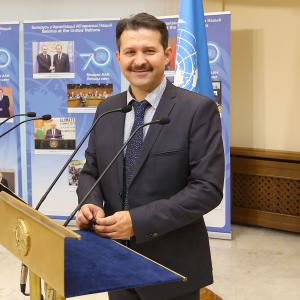UN Report: Pandemic Aggravated Threat of Human Trafficking Especially for Women and Girls
30 September 2020
- During the period from 2017 to 2018, in more than 110 countries about 74,514 human trafficking victims were detected. About 70 per cent of them were women and girls who are more often sold for sexual exploitation and less often for forced labour.
The pandemic has aggravated this threat, which is particularly serious for women from the vulnerable groups. This was stated in the report by the UN Secretary General published on Tuesday.
According to the research of the International Labour Organization, in 2016, 28.7 million women and girls worldwide became victims of forced labour, debt bondage, forced marriages, modern slavery and trade in human beings. The majority of human traffickers are men as usual.
“Trafficking in human beings continued because this type of criminal activities brings huge income and is not fraught with high risk,” the report states. Traffickers make profit and easily get away with it while the victims of their crime pay for it with their freedom, dignity and health. It is estimated that yearly profit of traffickers amount to 150 billion dollars making trafficking the biggest source of illegal profit.
Criminals thrive on people’s calamity. In particular, the main factors, which allow smugglers to ensnare women and girls, are poverty and inequality, according to experts’ opinion. Women are more often than men do low-paid jobs including in the informal sector. Migration, status of refugees, ethnicity, disabilities and HIV status are the factors that aggravate danger of exploitation.
Pandemic only makes the situation worse. When it comes to quarantine enforced in many countries, traffickers use digital technology and other modern means for recruiting and exploitation of victims. Women and girls, who suffered more than others as a result of the economic crisis, again get in the most vulnerable position as they are out of jobs and means of survival.
COVID-19 pandemic will entail the rise in modern slavery victims
As is well-known, demand creates its own supply. Customers play one of the key roles in the trafficking economic structure and exploitation, as the report says. Some may fail to understand that they use services of those who are enslaved; however many know about it but opt for silence because they can pay less for slave labour: private households, who hire domestic servants through traffickers, save about 8 billion dollars yearly.
Previous crises’ experience in the field of healthcare proved that women and girls in extreme conditions are exposed to increased risk of violence, first of all, from their sexual partners, sexual exploitation and become human trafficking victims. The experts believe that it happens amidst the COVID-19 pandemic. Hence they become even less protected from traffickers in human beings.
“Deepening inequalities and the rise of all forms of violence against women and girls, including trafficking, in the context of COVID-19, has the potential to significantly slow down progress on achieving the Goals, while also jeopardizing the limited progress made so far,” warned UN Secretary-General.
United Nations system entities help the countries to support human trafficking victims. For example, the International Organization for Migration in Azerbaijan, Belarus, Republic of Moldova and Ukraine offers means of protection to public and private asylums, where the victims may hide. The report contains the detailed recommendations on the fight against human trafficking.





